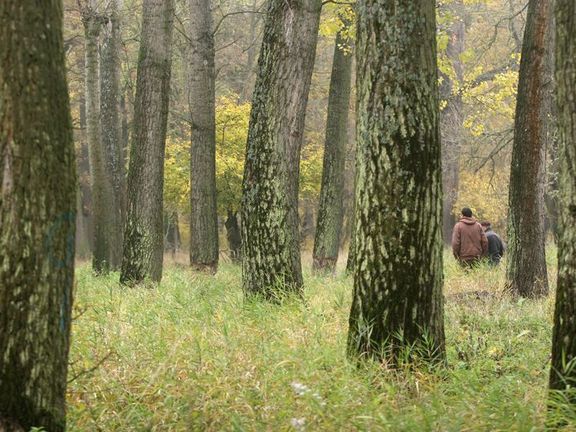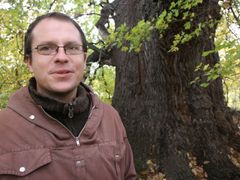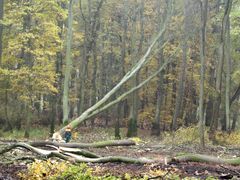Břeclav - An old oak tree has finger-wide holes bored into it by the critically endangered species of roundheaded wood borer extinct in most of the Czech Republic. Now, extinction threatens its existence in forests around the confluence of Dyje and Morava rivers.
Massive, ages-old oak trees are dying out, and those that could become new hosts to them and other beetles, spiders and butterflies are being felled by the foresters.
The area is as important to insects as South American rain forests are to theirs although their surface makes up for only 6 per cent of the Earth's surface, they are home to 60 to 80 percent of all existing species.
Likewise, South Moravian forest's trees are home to some species that cannot be found elsewhere. The territory is also important for many birds and wetland animals.
Key area
"From the point of view of Czech natural environment protection, this is a key area," Lukáš Čížek from the Entomology Institute of the Academy of Sciences says.
For months now he'd been trying to negotiate a solution with local woodmen, urging them to change both their way of thinking and working practices.
"If we don't find a solution, up to three per cent of insect species are going to die out. With some it is as much as five per cent. So far, about ten per cent of species are extinct," Mr Čížek says.
New forest as a substitute
A year ago, this large clearing was full of oaks and ash trees. Then the workers came with chainsaws and made them into mere wood. All that's left now is a narrow line of high trees on its border.

Infobox
The riverside forest
- The Dyje and Morava confluence is south of Břeclav and Lanžhot
- It's triangular and encompasses an area of almost 5 thousand hectares
- Different environments are making the area: waterside forests, clearings, meadows and the old, solitary oaks
- There is a network of canals, old river branches and tributaries and pools
- A small river, Kyjovka, flows through a middle of it.
"In three years' time, there will be ash trees here like this," Mr Zdeněk Vícha from Židlochovice Forestry shows the height of the imaginary trees, some two metres high from the ground.
"It's necessary to do the job, it should have been done ten years ago." The foresters think large scale felling and re-foresting, completely lawful and making conomical sense economically, does no harm. The animals will adjust and move elsewhere.
They fell a forest area up to two hectares large, keeping a line of trees. Some of the area is then readjusted for a forest newly grown: the ground is ploughed up using heavy technology, the stumps and the remnants of the felled trees are completely destroyed.
Dead homes for the insect
A recent survey shows that more than a half out of 439 oaks that could put up different species are dead. Only 14 per cent are still viable.
Mr Čížek says it's not his intention to stop culling the trees and that he sees forest renewal as vital. But not everything that stands should be felled, as it is now, he says.
A protected area status would do the job, he says, the problem is that all the efforts to extend the protected landscape status have failed since 1989.
They are only allowed the status as a part of NATURA 2000 European system, and the Dolní Morava Biosphere Natural Reserve sponsored by UNESCO. There is a catch, though. The boss here is Mr Jan Vybíral, a former director of Židlochovice Forestry, who opposed the extension of Pálava protected area.
"The fact that the area around the confluence is still unique amongst environmental areas is the result of many generations of forest workers," he wrote recently for a specialized magazine Lesnická práce (Foresting Work).
And he attacked Mr Čížek and his colleagues who are critical of his work as panicking and irresponsible. "For 250 years, the Forestry Act is here to ensure that the principles of the sustainability are respected and no vegetation perishes for good," he says.
Breakthrough
Recently, a breakthrough was achieved. Environmentalists made an agreement with Forest Keepers: not all of the trees would be felled.
For every 10 hectares of forest cleared, a hundred solitary trees will be kept. In addition, the foresters will plant new oak trees to provide habitat for insects.
The specific details are still to be ironed out.










